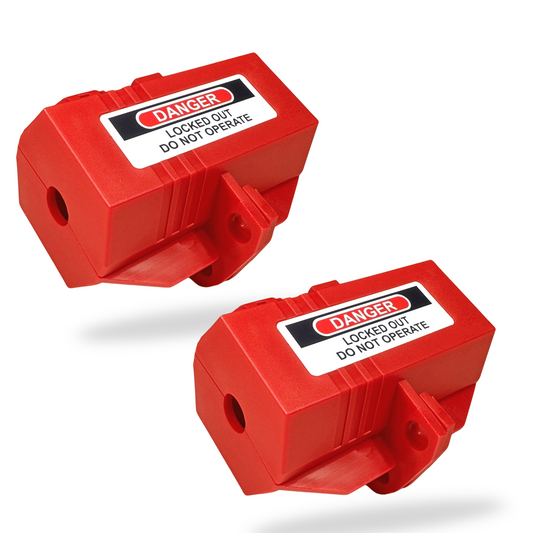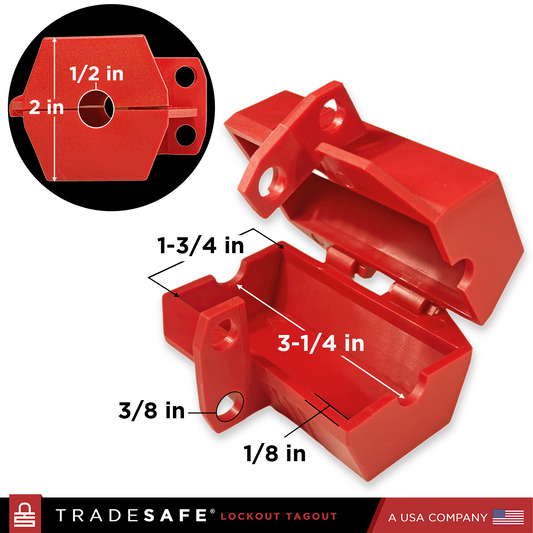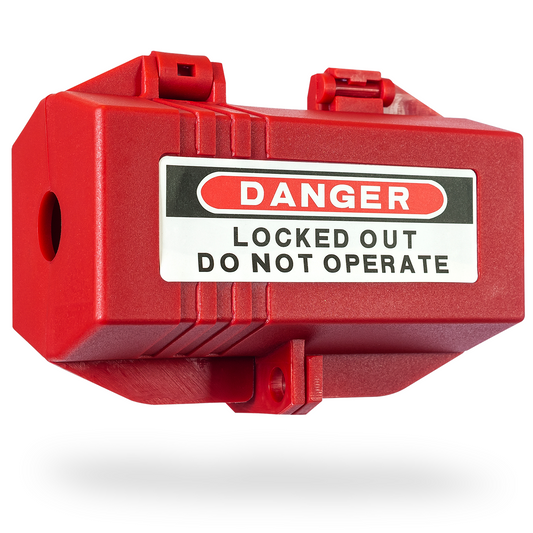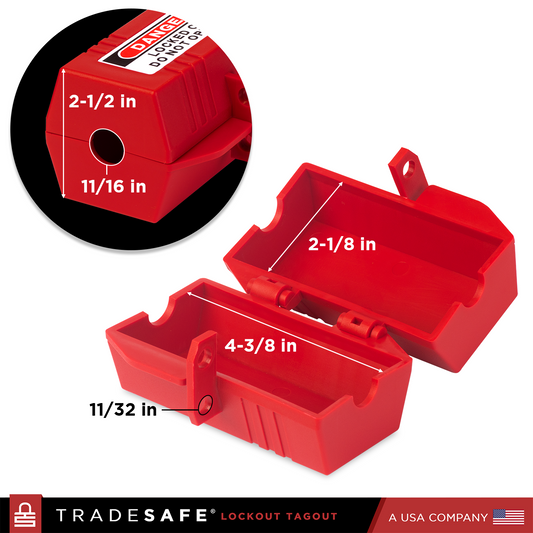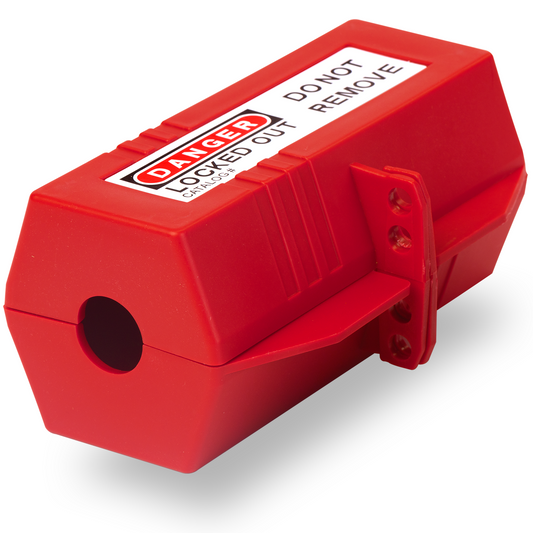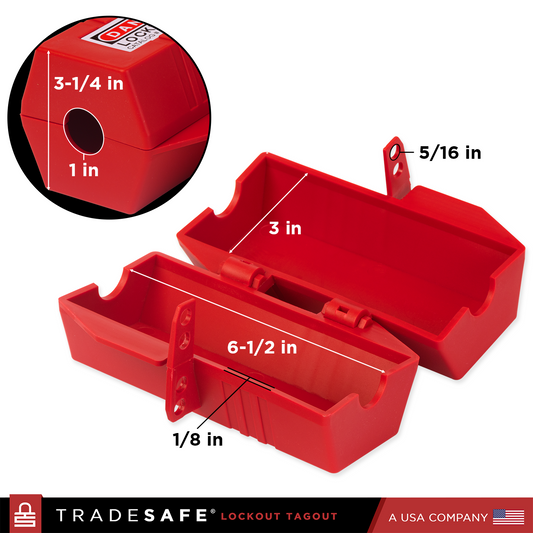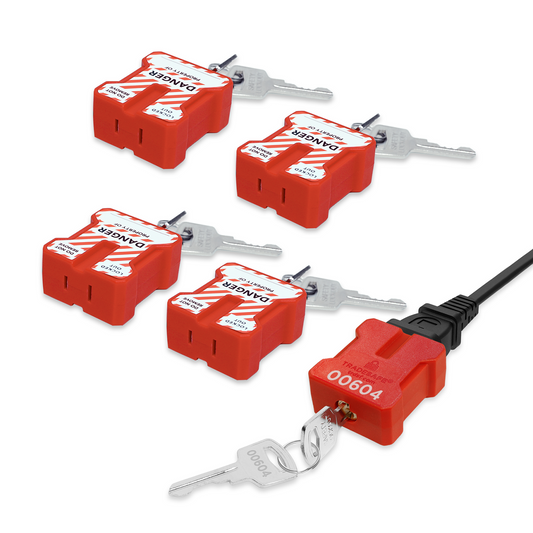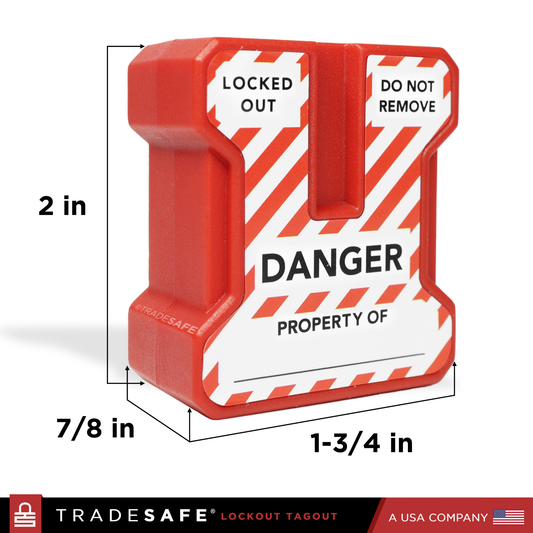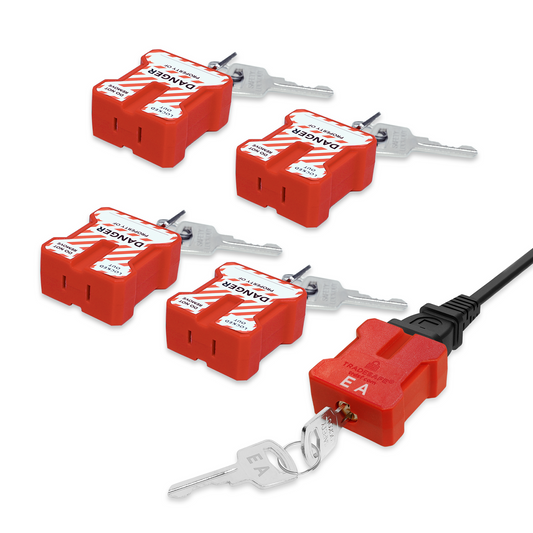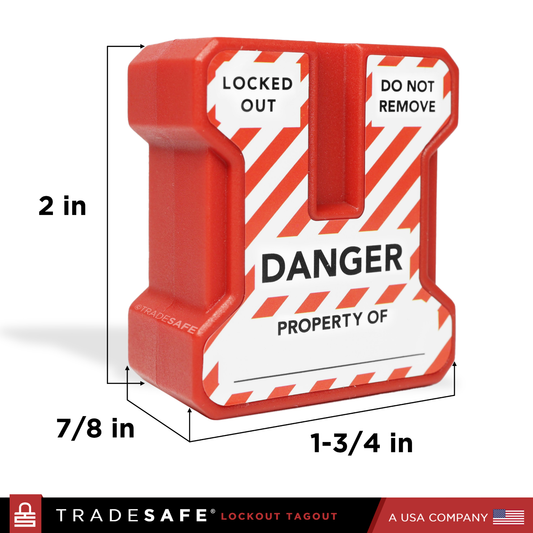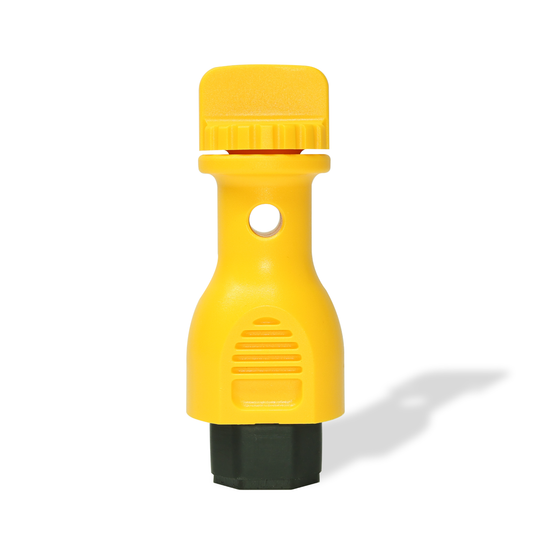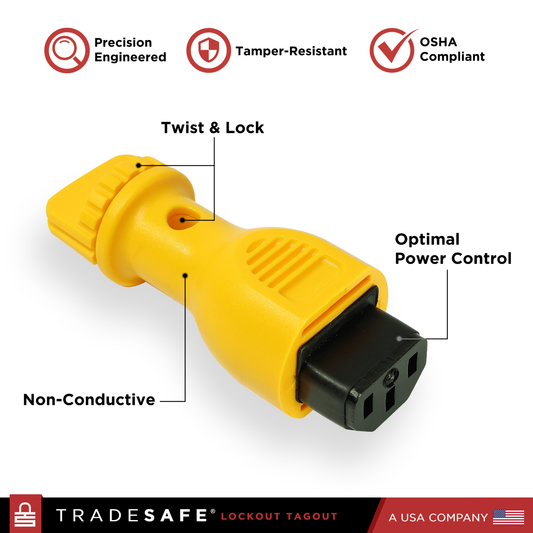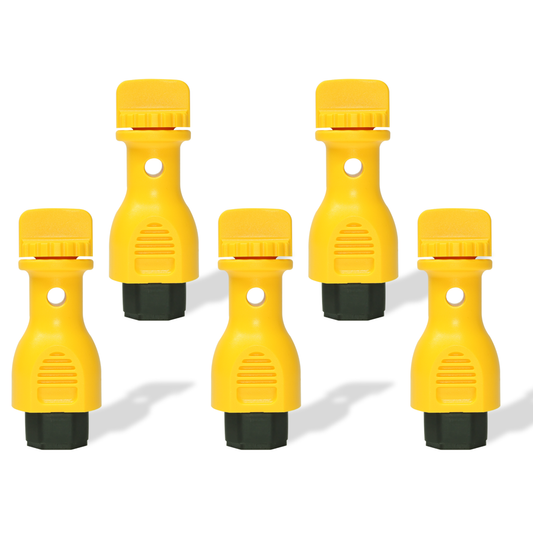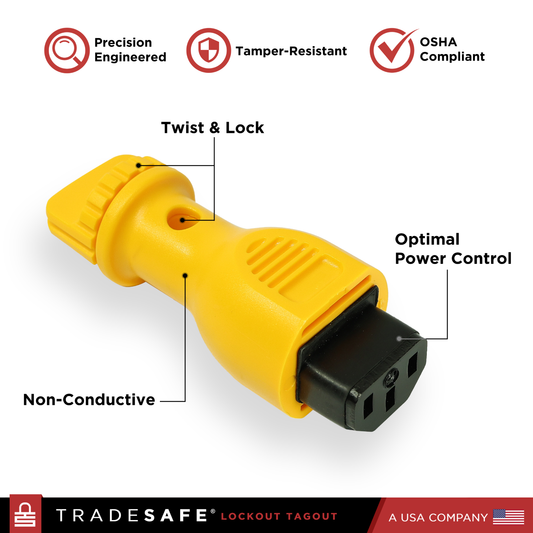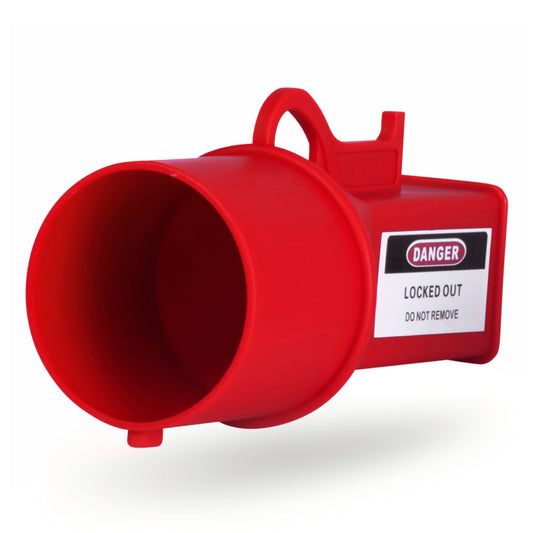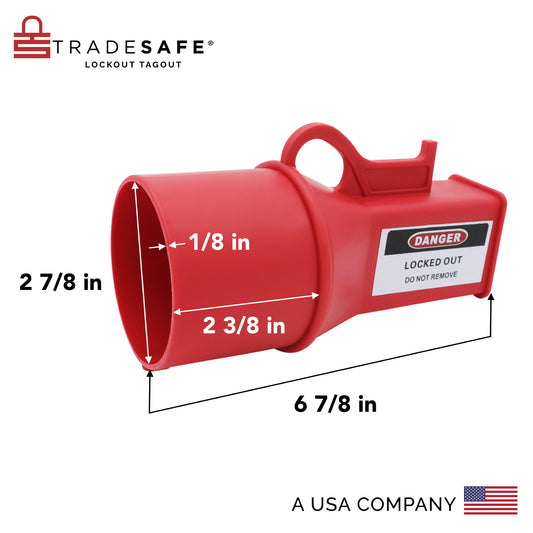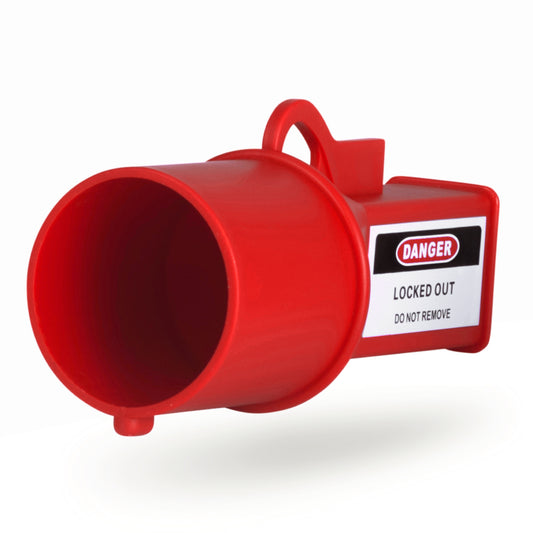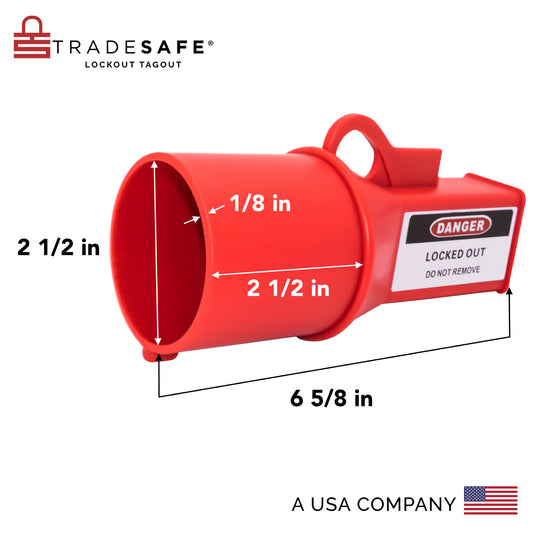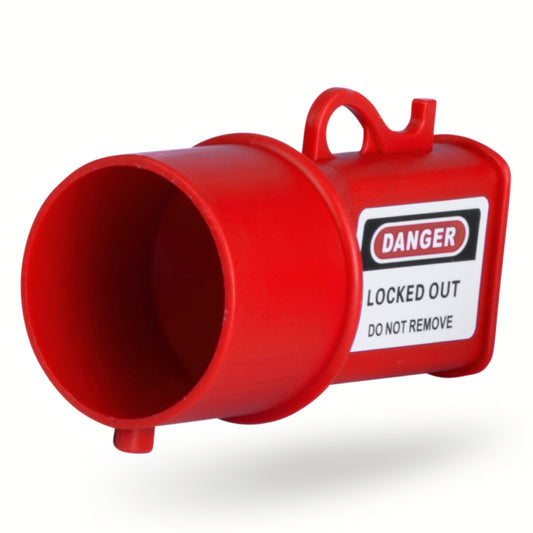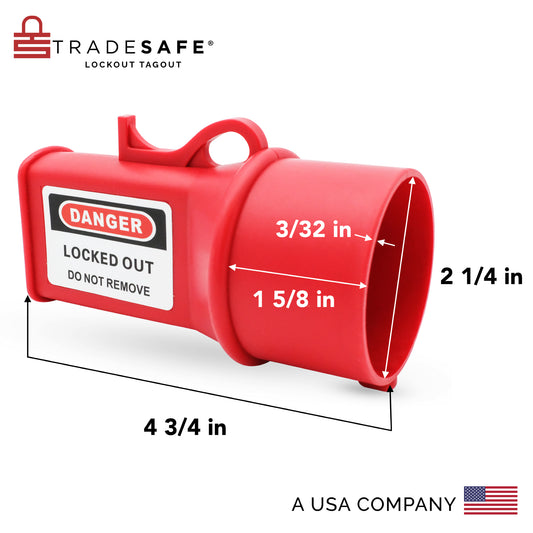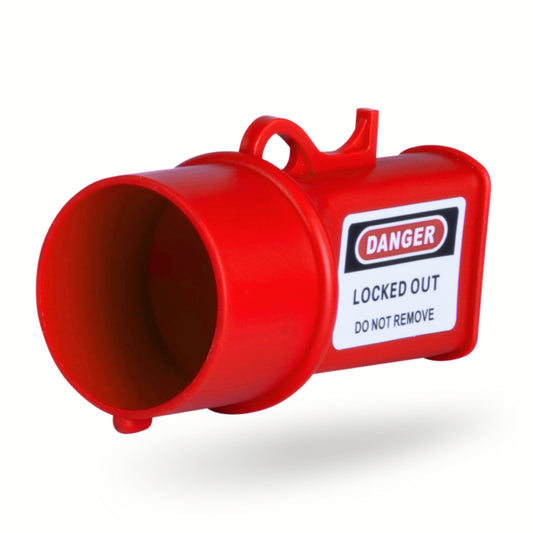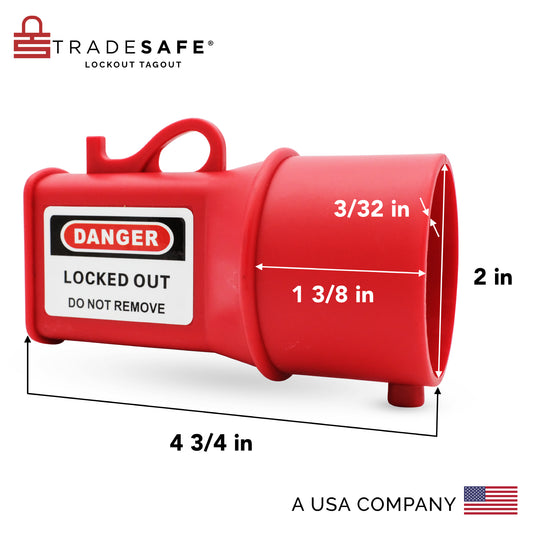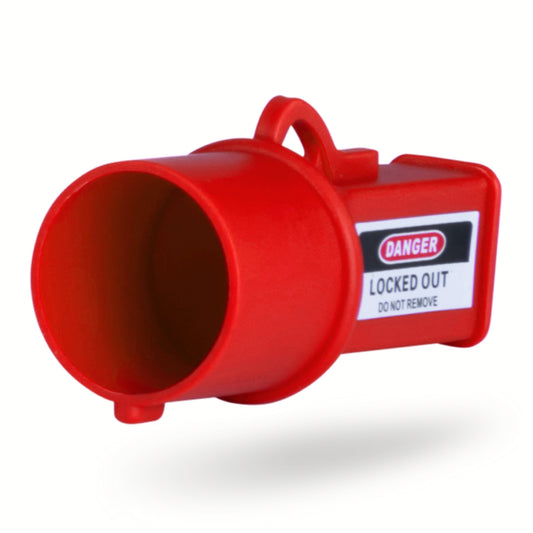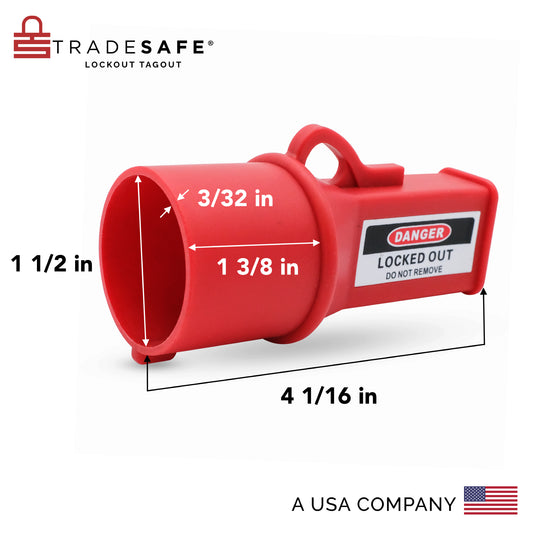-
QUICK VIEW
- High-impact resistant polypropylene plug lock
- Locks out up to 2 plugs; 1-3/4" max diameter
- 2 cord holes with 1/2" diameter
- Integrated Danger warning label
- Secure with up to 2 LOTO locks
Plug Lockout Device - 110V-125V - Small, 2 Pack
Regular price $14.95Regular priceUnit price per$24.95Sale price $14.95Sale -
QUICK VIEW
- High-impact resistant polypropylene plug lock
- Locks out up to 2 plugs; 2-1/8” max diameter
- 2 cord holes with 11/16” diameter
- Integrated Danger warning label
- Secure with up to 2 LOTO locks
Plug Lockout Device - 110 to 125V - Medium
Regular price $13.95Regular priceUnit price per$24.95Sale price $13.95Sale -
QUICK VIEW
- High-impact resistant polypropylene plug lock
- Locks out up to 2 plugs; 3” max diameter
- 2 cord holes with 1” diameter
- Integrated Danger warning label
- Secure with up to 4 LOTO locks
Plug Lockout Device - 220V - Large
Regular price $18.95Regular priceUnit price per$29.95Sale price $18.95Sale -
QUICK VIEW
- Secures 2-prong or 3-prong plugs, polarized or non-polarized
- Industrial-grade, non-conductive nylon plug lock
- Key-retaining brass core cylinder
- Matching code on power plug lock & key
Power Plug Lock Keyed Different - 5 Pack - 2 Keys Each
Regular price $84.95Regular priceUnit price per$150.00Sale price $84.95Sale -
QUICK VIEW
- Secures 2-prong or 3-prong plugs, polarized or non-polarized
- Industrial-grade, non-conductive nylon plug lock
- Key-retaining brass core cylinder
- Matching code on power plug lock & key
Power Plug Lock Keyed Alike Unlimited - 5 Pack - 2 Keys Each
Regular price $84.95Regular priceUnit price per$150.00Sale price $84.95Sale -
QUICK VIEW
- Locks out standard 3-pin plug connections or IEC plugs
- Nonconductive engineering polycarbonate power plug lock
- Compact design for convenient storage and transport
- Secure using 1 safety padlock with 1/4" shackle diameter
Power Cord Plug Lockout Device - 1 Pack
Regular price $22.95Regular priceUnit price per$50.00Sale price $22.95Sale -
QUICK VIEW
- Locks out standard 3-pin plug connections or IEC plugs
- Nonconductive engineering polycarbonate power plug lock
- Compact design for convenient storage and transport
- Secure using 1 safety padlock with 1/4" shackle diameter
Power Cord Plug Lockout Device - 5 Pack
Regular price $79.95Regular priceUnit price per$150.00Sale price $79.95Sale -
QUICK VIEW
- Impact-resistant polypropylene lockout device
- Locks out pin and sleeve receptacles, industrial sockets
- Straightforward design for convenient installation
- Secure using LOTO hasp and padlock
Pin and Sleeve Socket Lockout Device – 2-7/8” Diameter
Regular price $29.95Regular priceUnit price per$49.00Sale price $29.95Sale -
QUICK VIEW
- Impact-resistant polypropylene lockout device
- Locks out pin and sleeve receptacles, industrial sockets
- Straightforward design for convenient installation
- Secure using LOTO hasp and padlock
Pin and Sleeve Socket Lockout Device – 2-1/2” Diameter
Regular price $24.95Regular priceUnit price per$49.00Sale price $24.95Sale -
QUICK VIEW
- Impact-resistant polypropylene lockout device
- Locks out pin and sleeve receptacles, industrial sockets
- Straightforward design for convenient installation
- Secure using LOTO hasp and padlock
Pin and Sleeve Socket Lockout Device – 2-1/4” Diameter
Regular price $24.95Regular priceUnit price per$49.00Sale price $24.95Sale -
QUICK VIEW
- Impact-resistant polypropylene lockout device
- Locks out pin and sleeve receptacles, industrial sockets
- Straightforward design for convenient installation
- Secure using LOTO hasp and padlock
Pin and Sleeve Socket Lockout Device – 2” Diameter
Regular price $19.95Regular priceUnit price per$39.00Sale price $19.95Sale -
QUICK VIEW
- Impact-resistant polypropylene lockout device
- Locks out pin and sleeve receptacles, industrial sockets
- Straightforward design for convenient installation
- Secure using LOTO hasp and padlock
Pin and Sleeve Socket Lockout Device – 1 1/2” Diameter
Regular price $19.95Regular priceUnit price per$39.00Sale price $19.95Sale
Plug & Socket Lockout
When you work with electric machines and equipment, one of the most effective ways to prevent accidental re-energizing is to cut these machines off from their power source. Simply unplugging them from their sockets during maintenance and repair will not be enough, as anyone can pass by and plug them back in.
Thus, plug and socket lockout devices can ensure that machines will not be plugged back in while maintenance and repairs are ongoing. Plug lockout devices encase plugs and are locked with LOTO locks, thus making it physically impossible for anyone to plug a machine back in until the lockout is removed. Socket lockouts, meanwhile, go over electrical sockets and can prevent the machines in an entire area from being plugged back in.
These lockout devices are essential to electrical lockout tagout procedures. They are simple and easy to install but will be very difficult to remove by unauthorized personnel. Because they’re made of durable and impact-resistant material, they won’t twist, bend, or break without extraordinary force.
FAQ
What is electrical lockout?
When electrical machines or equipment in a facility are undergoing maintenance or repairs, it’s important to ensure that they will not be accidentally re-energized. Electrical lockout tagout thus refers to procedures that prevent unauthorized access to sources of electrical energy. These procedures help protect employees from injury or death.
How do you lockout an electrical socket?
What are pin and sleeve devices?
Pin-and-sleeve devices are often used to seal power connections in heavy-duty industrial applications due to their durability and consistency. Using these devices, power delivery can be protected from moisture, dirt, filth, and chemicals which are common in industrial workplaces.
There are five main types of pin and sleeve devices, namely: plugs, connectors, inlets, receptacles, and mechanically interlocked receptacles. Among these five types, mechanically interlocked receptacle is the least commonly used pin-and-sleeve device.
What is a pin and sleeve socket lockout?
Pin and sleeve socket lockout is a type of LOTO device that is used to keep electrical plugs from being inserted into sockets. This lockout tagout device comes in different sizes to accommodate various pin and sleeve socket sizes. The appropriate lockout device must be selected for the correct fit and effective lockout.
TRADESAFE pin and sleeve socket lockout can be easily inserted into the socket, after which a hasp and a padlock are affixed to ensure security and prevent unauthorized access.
Is a pin and sleeve socket lockout reusable?
How does a mechanically interlocked receptacle work?
What is IEC 60309?
How do plug locks work?
People Also Ask
How to use an electrical plug lock out?
Open the plug lockout device and place the electrical plug inside. Apply a padlock to secure the lockout device. Make sure that the plug can not be pulled or removed from the lockout device once the padlock is applied.
What are the safety precautions for plug and socket?
- Two-prong electrical outlets are outdated. If you’re still using it, then it’s time to replace your outlet.
- Always check cords and covers. Exposed wires from damaged cords or chipped or cracked cover must be replaced. Give time to examine them because improper insulation can be deadly.
- Do not overload an outlet. Never plug more than two machines using extension cords to prevent overheating. Overheating will make the wire insulation melt that can cause fire.
- Unplug cords slowly and safely.
- Ensure that plugs and sockets are locked out during repair or maintenance.
